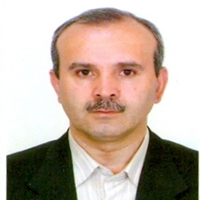Study on Simultaneous Colonization of Rhizophagus irregularis and Serendipita indica in Barley under Different P Levels Using Monoclonal Antibody
Recent studies show that most crops and horticultural plants can form symbiosis with the arbuscular mycorrhizal fungi (AMF) and the endophytic Serendepita indica, simultaneously. The endophytic fungus plays an important role in alleviating environmental stresses in plants. It has also been shown that excessive available phosphorus in soil limits the root colonization by arbuscular mycorrhizal fungi. No information is available on how soil phosphorus affects the establishment of endophytic fungus in root. Barley roots can be colonized by both mycorrhizal fungi and the endophytic fungus Serendipita indica. The objective of this study was to evaluate the effects of single or dual inoculation with Rhizophagus irregularis and Serendipita indica on barley roots under different phosphorus (P) levels. The researchers utilized a monoclonal antibody called MAb32B11 to assess the presence of glomalin, a signature molecule of arbuscular mycorrhizal (AM) fungi, in the roots. The glomalin content was quantified using the enzyme-linked immunosorbent assay (ELISA) method with the MAb32B11 antibody.
In this experiment, barley plants were inoculated with Rhizaphagus irregularis (AMF) and Serendepita indica (endophytic fungus) with three levels of phosphorus from triple super phosphate source. At the end of the vegetative growth period (about three months), the plants were harvested and phosphorus concentration in the plant were measured. A subsample from roots was stored in -20 ºC for determination of glomalin content. The glomalin content in the roots was analyzed using the monoclonal antibody MAb32B11. This antibody was employed to differentiate between the two fungi present in the roots and to quantify the abundance of arbuscular mycorrhizal fungi (AMF) specifically in plants treated with Rhizophagus irregularis. Additionally, the content of glomalin in the soil was determined at the end of the experiment using the same method as described above. The experiment was designed as a factorial completely randomized design (CRD) with three replications.
The results showed that the fresh and dry weights of shoot and root increased significantly in dual inoculation. At zero phosphorus level, shoot and root phosphorus concentrations were significantly higher in treatments with R. irregularis than in those without fungus (control). Under individual inoculation with R. irregularis, or S. indica as well as their dual inoculations, increasing level of phosphorus had no significant effect on shoot and root phosphorus concentration. In dual inoculation, the percentage of total colonization (88%) was significantly higher than that of individual inoculation treatment (68%) but the contribution of each fungus in root colonization under dual inoculation was significantly reduced as estimated by glomalin content of root and determination of total colonization. It was found that with increasing phosphorus level, total colonization percentage significantly decreased and the highest percentage of colonization (61%) was observed at zero level of phosphorus. By increasing phosphorus level, the percentage of root colonization was significantly decreased in individual inoculation by R. irregularis, or S. indica as well as dual inoculation. Results of glomalin assay in soil showed that the glomalin content was high in treatments of R. irregularis but control treatments without fungus and individual inoculation with S. indica had low glomalin. Antibody-reactive root glomalin was less in the dual inoculation treatment (1006.9 µg.g-1) than in the R. irregularis treatment alone (1924.5 µg.g-1) indicating that the presence of S. indica, in root inhibits, root colonization by R. irregularis. Moreover, the increasing of phosphorus level, significantly decreased root glomalin.
The increase of available phosphorus concentration in the soil caused to limit the expansion of the symbiosis of R. irregularis and S. indica, and this limitation was more for R. irregularis. In the case of dual inoculation with both Rhizophagus irregularis and Serendipita indica, the negative impact of phosphorus on colonization percentage was observed to be less compared to single inoculation. Although the percentage of colonization by each fungus decreased in the dual inoculation treatment compared to their individual inoculation, the overall colonization percentage increased significantly. It appears that in the dual inoculation scenario, while the total root colonization percentage increases, the presence of S. indica leads to a decrease in the colonization percentage specifically with R. irregularis. But in general, growth and nutrient absorption in the case of dual inoculation was better than the inoculation of each of them individually. It was also found that increasing the concentration of phosphorus in the soil caused a decrease in root colonization for both fungi, although the negative effect of phosphorus on the colonization of R. irregularis was more than that of S. indica. The measurement of glomalin in soil and root showed that the inhibitory effect of S. indica fungus on R. irregularis is less in soil than in root.
- حق عضویت دریافتی صرف حمایت از نشریات عضو و نگهداری، تکمیل و توسعه مگیران میشود.
- پرداخت حق اشتراک و دانلود مقالات اجازه بازنشر آن در سایر رسانههای چاپی و دیجیتال را به کاربر نمیدهد.



